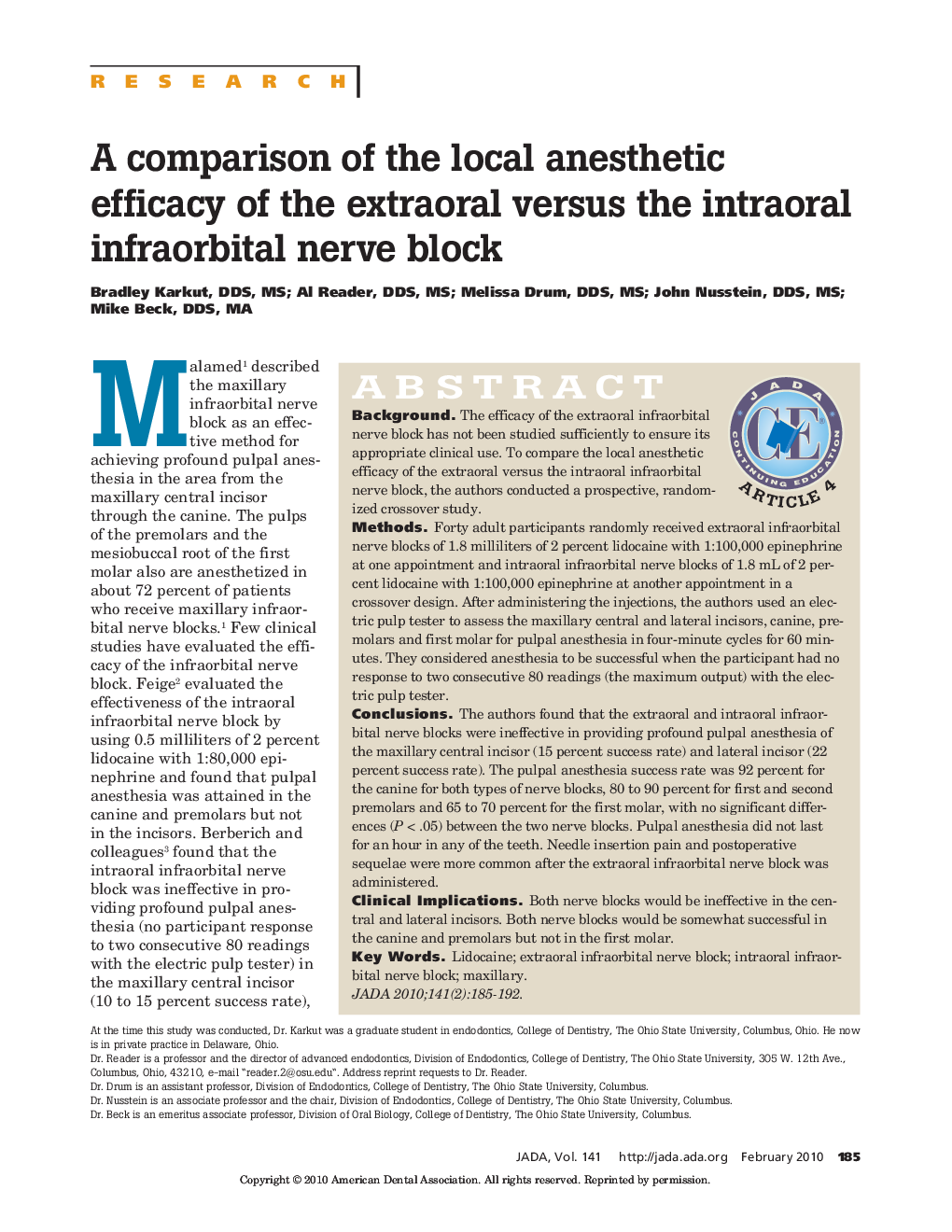| Article ID | Journal | Published Year | Pages | File Type |
|---|---|---|---|---|
| 3138901 | The Journal of the American Dental Association | 2010 | 8 Pages |
ABSTRACTBackgroundThe efficacy of the extraoral infraorbital nerve block has not been studied sufficiently to ensure its appropriate clinical use. To compare the local anesthetic efficacy of the extraoral versus the intraoral infraorbital nerve block, the authors conducted a prospective, randomized crossover study.MethodsForty adult participants randomly received extraoral infraorbital nerve blocks of 1.8 milliliters of 2 percent lidocaine with 1:100,000 epinephrine at one appointment and intraoral infraorbital nerve blocks of 1.8 mL of 2 percent lidocaine with 1:100,000 epinephrine at another appointment in a crossover design. After administering the injections, the authors used an electric pulp tester to assess the maxillary central and lateral incisors, canine, premolars and first molar for pulpal anesthesia in four-minute cycles for 60 minutes. They considered anesthesia to be successful when the participant had no response to two consecutive 80 readings (the maximum output) with the electric pulp tester.ConclusionsThe authors found that the extraoral and intraoral infraorbital nerve blocks were ineffective in providing profound pulpal anesthesia of the maxillary central incisor (15 percent success rate) and lateral incisor (22 percent success rate). The pulpal anesthesia success rate was 92 percent for the canine for both types of nerve blocks, 80 to 90 percent for first and second premolars and 65 to 70 percent for the first molar, with no significant differences (P < .05) between the two nerve blocks. Pulpal anesthesia did not last for an hour in any of the teeth. Needle insertion pain and postoperative sequelae were more common after the extraoral infraorbital nerve block was administered.Clinical ImplicationsBoth nerve blocks would be ineffective in the central and lateral incisors. Both nerve blocks would be somewhat successful in the canine and premolars but not in the first molar.
